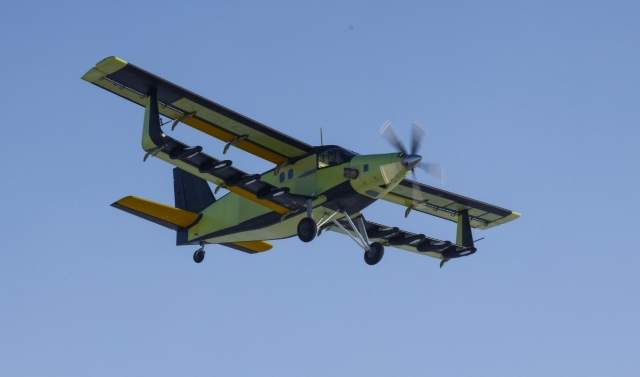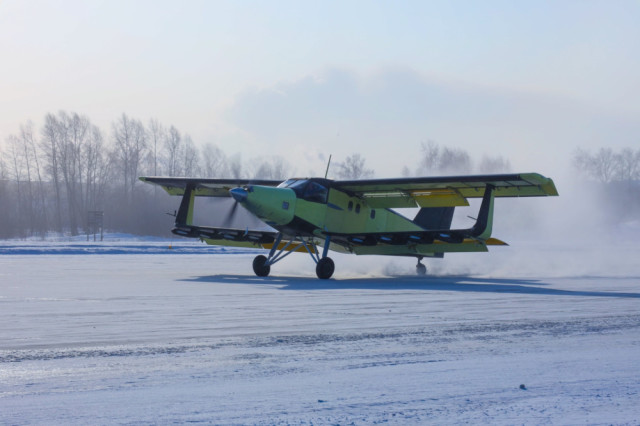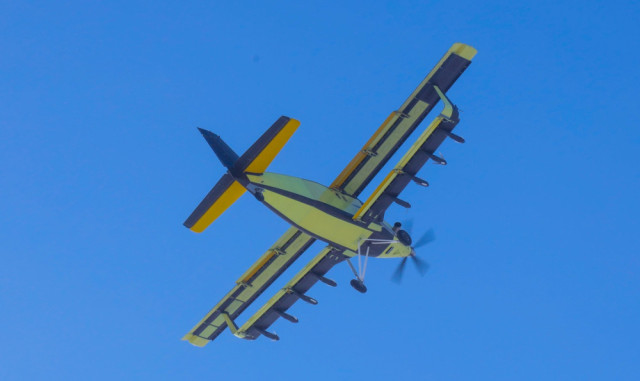On February 16, 2024, the Siberian Scientific Research Institute of Aviation named after S. A. Chaplygin (SibNIIA, Novosibirsk, part of the N.E. Zhukovsky Institute) announced the first flight tests of the demonstrator of the heavy transport unmanned aerial vehicle ultrashort takeoff and landing "Partizan", developed by order of the Foundation for Advanced Research.

Demonstrator of the heavy transport unmanned aerial vehicle of ultrashort takeoff and landing "Partizan" developed by the Siberian Scientific Research Institute of Aviation named after S. A. Chaplygin (SibNIIA, part of the Scientific Research Center "Institute named after N.E. Zhukovsky") in the first flight, 02/16/2024 (c) Siberian Scientific Research Institute of Aviation named after S. A. Chaplygin
The first flight of the drone was carried out in manned mode to ensure flight safety and take flight data for subsequent training of the automatic control system worked out on a semi-natural stand. The flight took place under the control of test pilot Vladimir Barsuk and lasted 20 minutes at an altitude of 200 m at a speed of 50 to 200 km/h.
The first flight confirmed a significant increase in take-off and landing characteristics compared to aircraft of this class. The placement of an active blowing system on the aircraft along the entire span of the lower wing will allow the Partizan to significantly reduce the take-off and landing distance and ensure stable control at ultra-low speeds up to 50 km / h.
In the near future, in accordance with the flight test program, planned work will be carried out to confirm key flight performance characteristics and switch tests to unmanned mode. At the end of the tests, the demonstrator must confirm the possibility of transporting goods weighing up to 1000 kg over distances up to 1000 km, taking off and landing on unprepared sites with dimensions of 50 by 50 meters in both manned and unmanned mode.
"As a result of the work, we will receive a universal aircraft with the possibility of optional piloting. Due to the presence of an automatic control system, both fully autonomous cargo transportation in offline mode and passenger transportation in manned mode can be organized. The automatic control system will greatly simplify piloting an aircraft, which, together with a significant reduction in requirements for take-off and landing sites, in the future can make domestic aviation truly affordable, and Partizan is in demand from a large number of operators in various fields of application," commented Andrey Grigoriev, General Director of the FPI.
"Today, during the first test flight, we confirmed the declared takeoff and landing characteristics and stable control at ultra-low speeds. I am sure that Partizan will be able to become a worthy alternative to helicopter-type aircraft and in demand in various fields of application from performing cargo and passenger transportation, participating in rescue operations, extinguishing fires to carrying out aviation chemical works, works in the interests of sanitary aviation, aviation monitoring. Therefore, currently, together with the Government of the Novosibirsk Region, we are working on planning the creation of a research and production center for unmanned aircraft systems at the Berdsk-Tsentralny airfield," explained Vladimir Barsuk, Director of SibNIA, Honored Test Pilot of the Russian Federation.
From the bmpd side, we point out that the demonstrator of the heavy transport unmanned aerial vehicle of the ultrashort takeoff and landing "Partizan" was created on the basis of the previously developed SibNIA aircraft TVS-2DTS, which made its first flight in July 2017. The TVS-2DTS aircraft is the fruit of SibNIIA's extensive work on the radical modernization of the An-2 aircraft. The TVS-2DTS is equipped with an American Honeywell TPE331-12UAN turboprop engine with a takeoff power of 1100 hp and a five-bladed reversible propeller manufactured by Hartzell Propeller, and has an all-composite structure with a specially designed wing and fuselage made of carbon fiber. To improve the take-off and landing characteristics in the Partisan variant, the aircraft is additionally equipped with eight electric motors with propellers located on the lower wing. Testing of this scheme with electric motors was previously carried out on a modified TVS-2MS aircraft (a remotorized An-2 with a Honeywell TPE331-12UAN engine).


Demonstrator of the heavy transport unmanned aerial vehicle of ultrashort takeoff and landing "Partizan" developed by the Siberian Scientific Research Institute of Aviation named after S. A. Chaplygin (SibNIIA, part of the Scientific Research Center "Institute named after N.E. Zhukovsky") in the first flight, 02/16/2024 (c) Siberian Scientific Research Institute of Aviation named after S. A. Chaplygin
